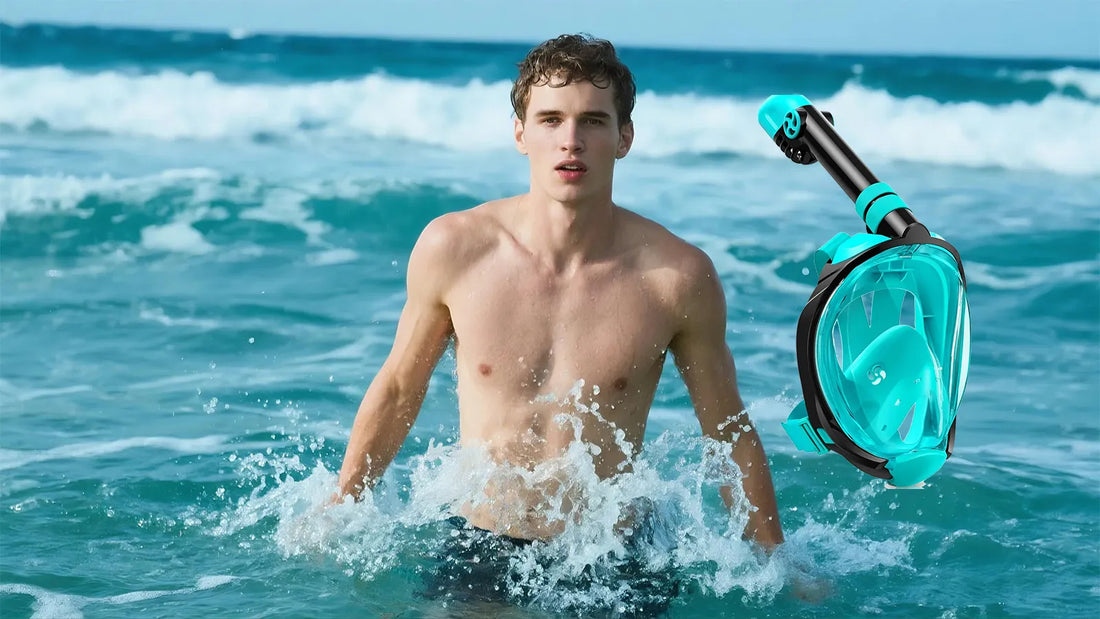Full face snorkel masks have gained popularity in recent years, offering a seemingly convenient way to explore underwater worlds. However, many snorkeling destinations and organizations have banned their use. This article delves into the reasons behind these restrictions, the potential dangers they pose, and how you can enjoy snorkeling safely without compromising your experience.
The Appeal of Full Face Snorkel Masks
Full face snorkel masks are designed to cover the entire face, allowing users to breathe through both their nose and mouth. This design eliminates the need for a separate mouthpiece, making it easier for beginners to snorkel. The masks also provide a wider field of vision and often come with anti-fog features, enhancing the overall experience.
Why Are Full Face Snorkel Masks Not Allowed?
Despite their advantages, full face snorkel masks have been banned in many locations. The primary concerns revolve around safety issues, including the risk of carbon dioxide buildup, limited emergency response options, and potential design flaws.
Risk of Carbon Dioxide Buildup
One of the most significant concerns with full face snorkel masks is the potential for carbon dioxide (CO2) buildup. Unlike traditional snorkels, which allow for the expulsion of CO2, full face masks can trap exhaled air. This can lead to dizziness, unconsciousness, and even drowning.
Limited Emergency Response Options
In an emergency, quick removal of the mask is crucial. Full face masks can be challenging to remove swiftly, especially for inexperienced users. This delay can be life-threatening in situations where immediate action is required.
Design Flaws and Lack of Regulation
Many full face snorkel masks on the market have not undergone rigorous testing or certification. This lack of regulation means that some masks may have design flaws, such as inadequate ventilation or poor sealing, which can compromise safety.
Safer Alternatives to Full Face Snorkel Masks
If you're concerned about the restrictions on full face snorkel masks, there are safer alternatives that still offer a great snorkeling experience. Traditional snorkel masks with separate mouthpieces are widely recommended. These masks have been tested and proven to be safe, providing adequate ventilation and easy removal in emergencies.
Traditional Snorkel Masks
Traditional snorkel masks cover only the eyes and nose, with a separate mouthpiece for breathing. This design allows for efficient CO2 expulsion and quick removal in case of an emergency. Many models also come with anti-fog features and a wide field of vision.
Dry Snorkels
Dry snorkels are another excellent option. These snorkels have a mechanism that prevents water from entering the tube, making them ideal for beginners. They are easy to use and provide a safe and enjoyable snorkeling experience.
Tips for Safe Snorkeling
Regardless of the type of mask you choose, following safety guidelines is essential for a safe snorkeling experience. Always snorkel with a buddy, stay within your limits, and be aware of your surroundings. Regularly check your equipment to ensure it's in good condition and fits properly.
Snorkel with a Buddy
Snorkeling with a buddy is one of the most effective ways to ensure safety. A buddy can assist you in case of an emergency and provide support if you encounter difficulties.
Stay Within Your Limits
It's important to stay within your physical limits while snorkeling. Avoid venturing too far from the shore or into deep waters if you're not confident in your abilities.
Check Your Equipment
Before heading out, always check your equipment to ensure it's in good condition. Make sure your mask fits properly and that there are no leaks. Test your snorkel to ensure it's functioning correctly.
While full face snorkel masks may seem like a convenient option, the potential risks they pose make them a less safe choice for underwater exploration. By opting for traditional snorkel masks or dry snorkels and following safety guidelines, you can enjoy a safe and memorable snorkeling experience. Always prioritize your safety and be aware of the regulations in your chosen snorkeling destination.

